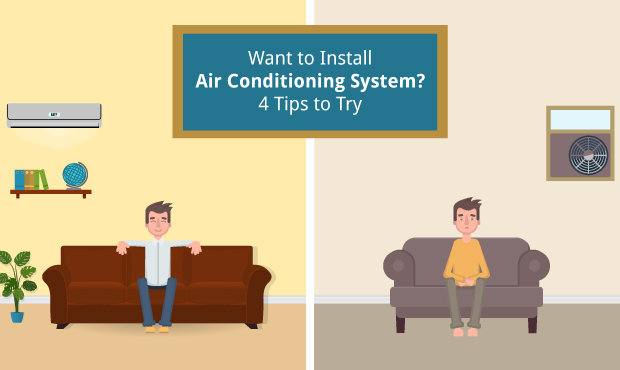
Being kind to the environment and reducing your carbon footprint are common concerns for Massachusetts homeowners, especially when it comes to choosing the right cooling system for the home. On the other hand, the hot, humid New England summers demand a robust system that doesn’t leave comfort as an afterthought. If you’re thinking about replacing or upgrading your air conditioner system, here are four things to consider first.
1. Existing Structure and Ductwork
Before you can make an informed decision on what type of air conditioning system to install in your home, you must first consider what is already there. For example, if you’re considering a central air conditioning system, you’ll need ducts throughout the home to circulate cooled air. Adding ductwork to a home is a major expense, and it will affect the appearance of your rooms.
The square footage and layout of your home are another important consideration. Window and portable units are not practical for homes with many rooms or large spaces. Central air conditioning and ductless mini-splits provide efficient solutions for bigger homes, with mini-splits offering flexible scaling depending on your needs.
2. Placement
Considering the placement of your air conditioner will depend on which type of system you choose. For example, window units require an opening that is the right shape and size to support the weight of the unit, as well as a way to secure support for the underside. If you do not have an appropriate window, a portable unit that works entirely indoors is another simple option.
For a central air conditioning system or a ductless mini-split, an outdoor condenser unit is installed separately from the indoor circulation unit. The outdoor component of either must be level, allow for proper circulation, and should ideally be at least partially shaded. The indoor part of a central system is usually located in a utility room or basement, while the indoor component of a mini-split is placed in the space that will be cooled.
3. Cost and Efficiency
The expense of adding an air conditioning system is another important consideration. Window and portable units have the lowest cost and installation expense. But their usefulness can be limited, and they are best for temporary situations. Central air cost varies depending on the size of your home and cooling needs. Plus, if you do not already have ductwork in your home, installing a central system will be a considerable expense. Ductless mini-splits offer the simplest installation for a permanent cooling option.
For maximum efficiency, a central air conditioning system usually requires a slightly complex arrangement that allows you to cool your home by zone so you’re not wasting money cooling rooms that are unoccupied. Ductless mini-splits offer easy efficiency as you only need to run the unit in occupied rooms.
4. Return on Investment
Recovering the cost of the equipment and installation of any major home upgrade should be considered either in terms of energy savings or added value to your home. You should also consider whether you expect to stay in your home for the foreseeable future. If a move is in your near future, do you want to use an upgrade as an investment that you’ll recover when it’s time to sell or use as a feature to attract buyers?
Window and portable units are essentially temporary solutions that won’t add or detract value from your home–unless potential buyers have to look at an unsightly window unit. Central air will typically provide a positive return on your investment, but adding ductwork to a home can interrupt the architecture or force lowered ceilings–both of which may not be very attractive. Ductless mini-splits are another value-adding option and offer the advantage of placement flexibility.
Ductless Air Conditioning System
A ductless mini-split air conditioning system is a great way to cool your home without a lot of energy and with minimal disruption to your home. You’ll enjoy zoned cooling at the touch of a button, advanced programming with timers and sleep functions, and the entire system is easily expandable as one outdoor unit can support several indoor units.
To learn more about comfortable and energy-efficient cooling with a ductless mini-split system, including offsetting the cost of installation with a 0% Mass Save Heat Loan, request your no obligation consultation today!








